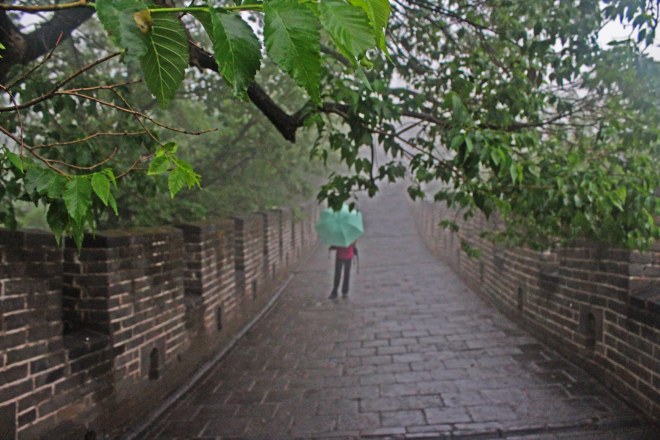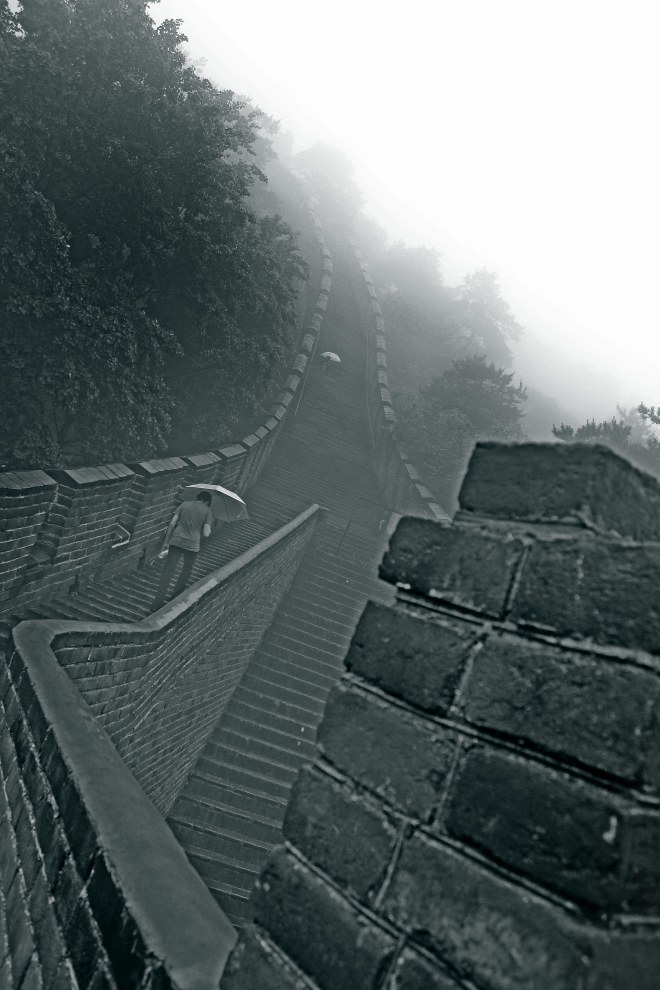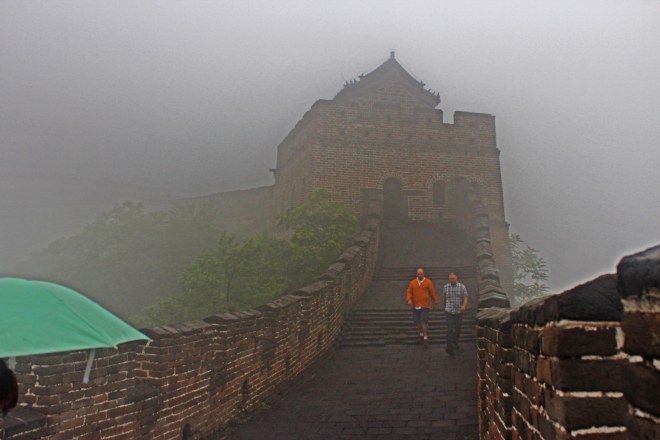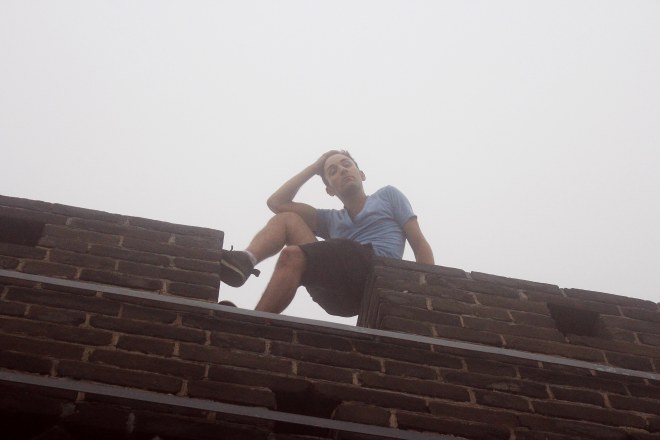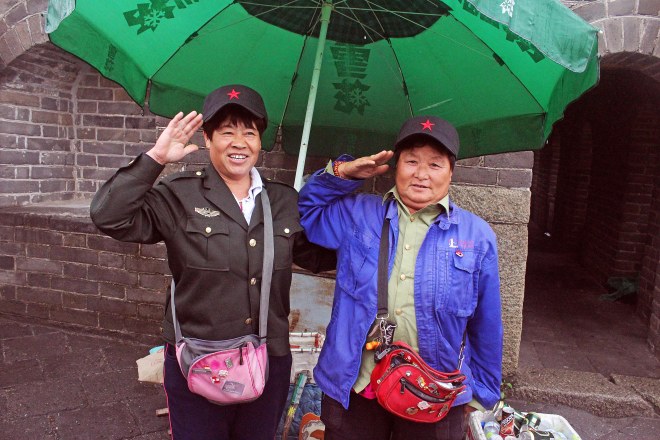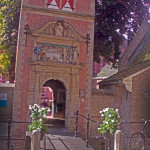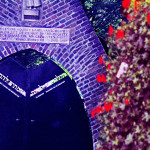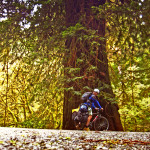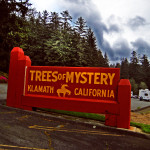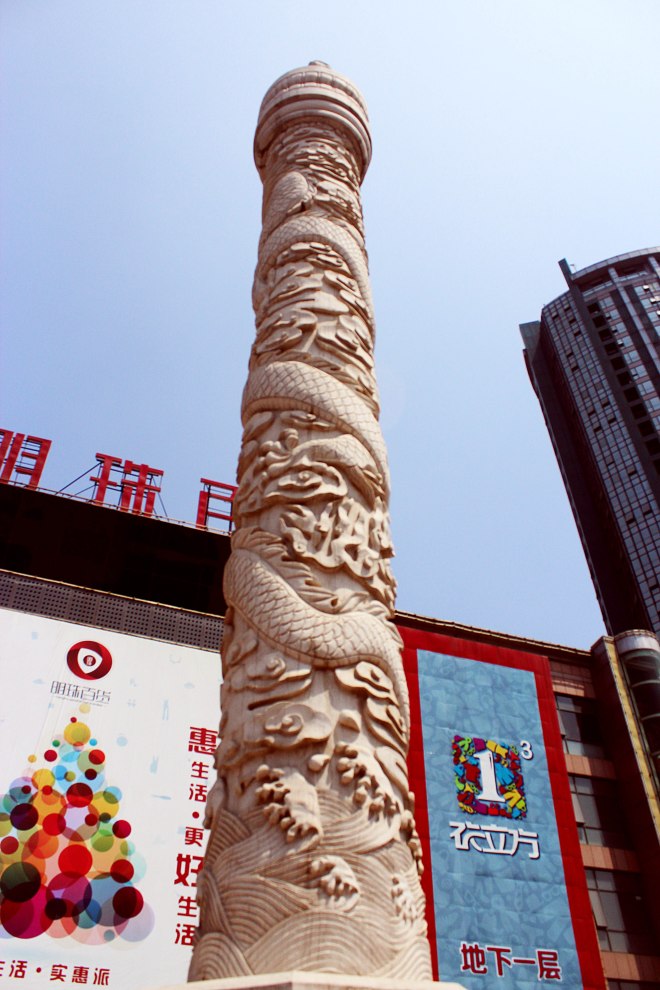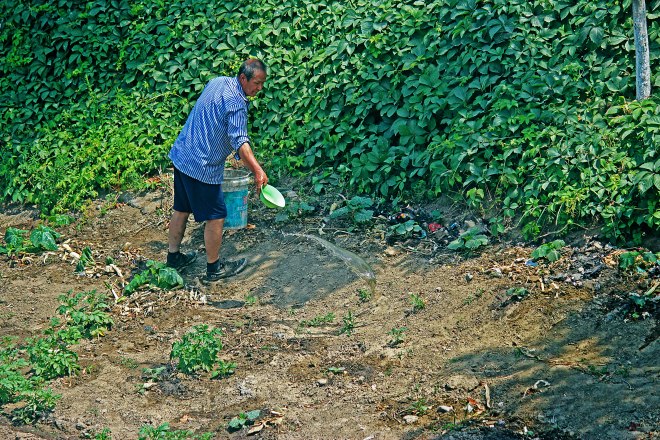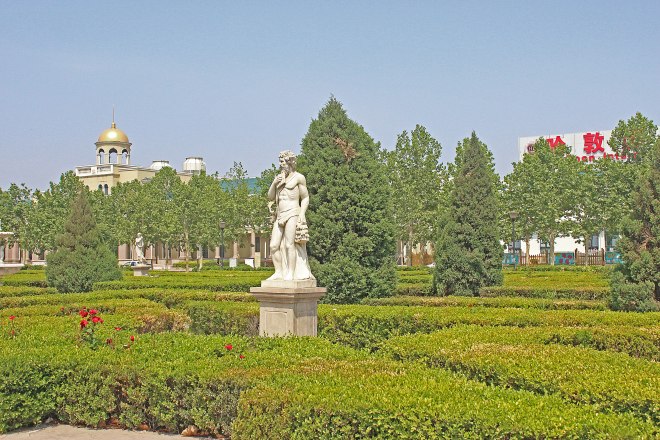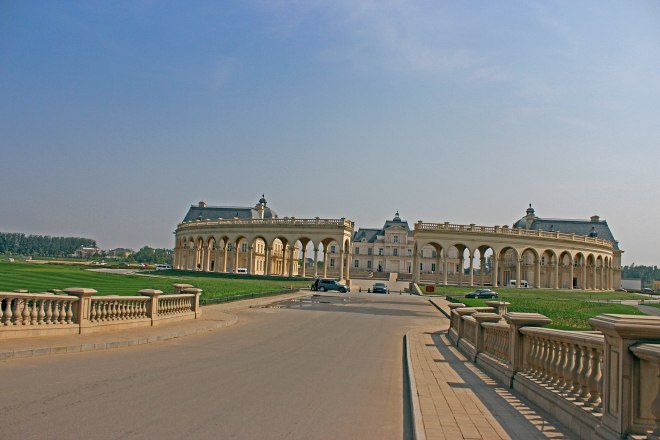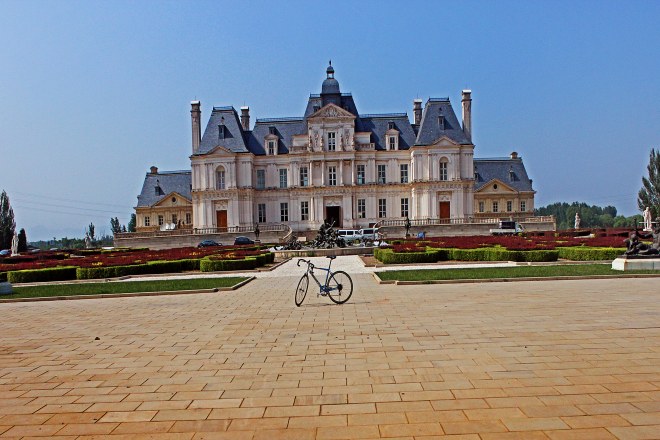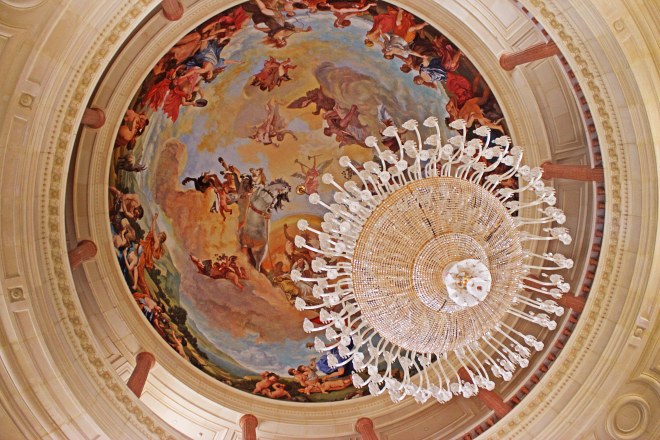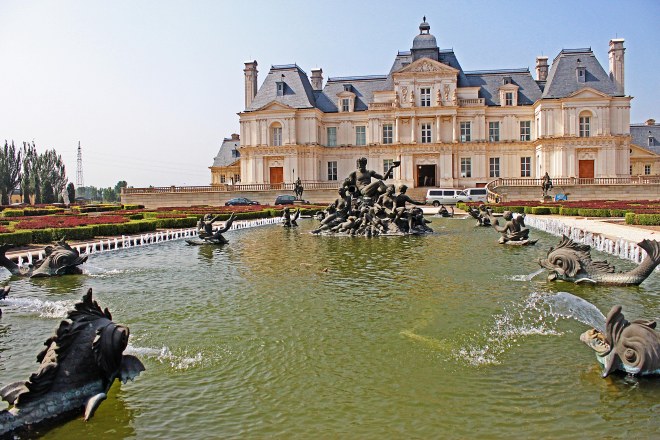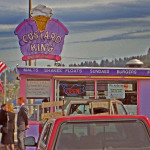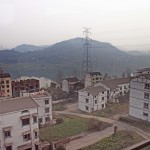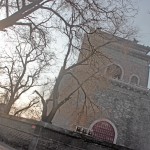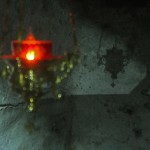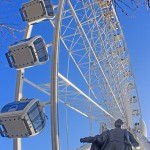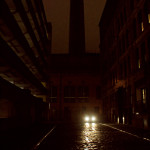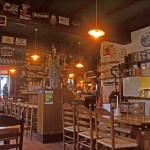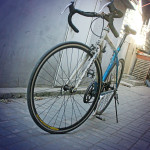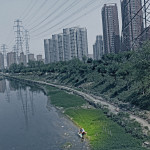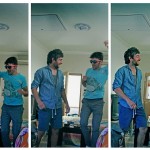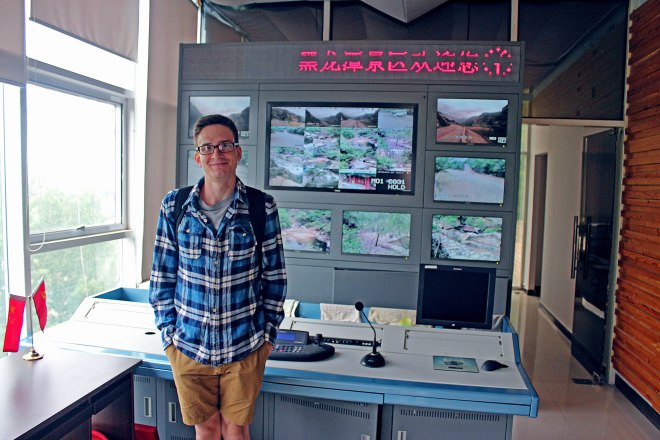“It not a Great Wall. It’s an alright wall. It’s the Alright Wall of China.”
-Karl Pilkton, An Idiot Abroad.
After reading information about The Great Wall in his Lonely Planet China Guide and realizing many of the tourist sections of the wall were rebuilt in the 1980s, to include such ancient devices of revelry such as massive, German engineered slides, hawkers selling you skull caps with a single braid of black hair coming out of the back of them and pits filled with suicidal brown bears, Karl was left unimpressed by what some would consider one of the greatest feats of human skill and endurance of all time. Like Mr. Pilkington, I was very wary to see “The Wall”, as I was not interesting in see Great Wall 2.0. Not even 2.0. Mavericks upgrade. Shitty, cheap and simply a money grab.
The GREAT thing about the GREAT Wall is it is humongous. One, I shouldn’t be so judgement, so….yes…one…fine…gentleman attempted to walk the entire length of the wall. For starters, there isn’t just ONE wall. Regardless, He failed. Like not, you were SOOO close. No. He failed miserably. It goes over ice mountain ranges. Like, your ability to walk isn’t how it is in Skyrim in real life, sir. Its Lord of the Ring’s helicopter shot BIG. Back to the Greatness of this, the Chinese government simply doesn’t have enough resources nor care to “tourify” every inch of it and tourists aren’t going to be bothered to trek into the middle of no where to stare at a wall. Or so they think. I wanted to see The Great Wall. Or more so, the Real Great Wall, not the Fake Wall. Luckily there are enough people on the internets that feel the same way.
For all your up-to-date Wall needs, check out: http://www.greatwallforum.com/
Huanghuachang, the Great Wall that goes into a river, due to damming was the planned destination. Buses were researched and on a rainy weekend morning I headed out on a somewhat empty bus from Dongzhimen Central Station. Our excitement was a sweet as sugar, but the rain would not melt it. So maybe it was as sweet as honey as I think precipitation has no effect of that sticky substance. Through the outskirt hills of Beijing, in Huirou city. A few stops. Nothing unusual. Faces come on and off. Sits empty and fill. A pair of eyes meet mine.
“You going to Great Wall”
“Yup”
“Where?”
“Huanghuacheng”
“Oh. It’s closed.”
Pause. From my research I knew that this was an unregulated part of the Wall. This means no ticket booth or official check in procedures. This SHOULD mean no opening or closing time. I was confused and in my confusion, we got off the bus and loaded into his vehicle. It was like so trance. Like trusting the white panel van full of candy.
“Where are we going?”
“To the Great Wall”
“What? I thought it was closed”
“Mutianyu is open”
“D’oh”
Mutianyu was one of the horribly touristic sections of The Wall I had wished to never encounter. We had been duped. The man, who was wearing an official bus staff uniform, removed it. He was a Black Taxi Driver and we were at him whim, along with another white couple that sat in the car with us as well. I counted my wad o’ money. I knew that Huanghuacheng was no longer an option anymore, but I was damned if I was going to pay a zillion dollars to go pay a zillion more dollars to hang out with a zillion tourists on a 5 year old’s macaroni art project, deemed The Great Wall. We came to a “reasonable” deal. Exiting the black cab, we were suddenly drenched from above and from all angles, by rain and dripping hawkers. Pretty sure I don’t need a 4 foot statue of Mao made of the finest plastics. No, thank you, that’s awful kind of you, I just don’t think I am in the mood to buy a pet bird or cat or dog or ?. Though we did need an umbrella. Again, hard bargained, including using the line, I live in Beijing, I know how much this should cost, don’t fuck with me (yeah, I totally have no idea how to say that last line, but imagine that reaction). The adult umbrella was ridiculously priced, so we bought two kid ones. It was like walking on a tight rope, balancing the circumference of the small umbrella perfectly above our heads. Through hawkers row, lined with booths, flashing blinding lights into your retina, like maybe if you were blind you wouldn’t be able to see the piles of shit, drinks, t-shirts, shit and more shit being sold. But, to be honest, they are people just trying to scrape by, so I get it. I feel for them, but on a day where the clouds had opened both physically and metaphorically, I had very little patience to gab. Purchased expensive tickets with a glib smile plastered to my face plastered in wet hair. Climbed numerous stairs up and up and up. AND Viola! On the Wall. Or were we?
The fog, which was as thick as being surrounded by a legion of Santa beards, made it difficult to tell exactly where you were. It felt as if we were on a road in the clouds. The rain was actually a blessing in disguise, as it cleaned the wall of most of the tourists and hawkers. Yet, with map in hand, I had alternative plans. I was heading to the greyed out area at the edge of the map. I was going to see the REAL wall. And no, you can’t go beyond this point sign or cement blockade was going to stop me. Up an over the blockade and finally, we were face to face with antiquity. The fog felt more appropriate here, as if it became part of the myth of the wall, something that existed on a scroll in waves of black ink. We stood atop a crumbling tower, one of the many guard towers that appear along the wall. We followed The Wall for a bit. Old growth vegetation fought its way up through the crumbling structure. At points it was hard to tell where The Wall was and if we were just aimlessly meandering, lost in a sea of evergreens. But then a small rock, a patch of rubble would lead us onwards. We walked for 40 minutes until the underbrush, became the overbrush and we had to turned back, in fears of being engulfed. This part, getting to touch the real stone of this magnificent work, the same stones that the builders had assembled hundreds of years ago at the orders of their Emperor, was the pay off. Done with the Real Wall, the rest of the Wall was simply the elaborate pathway back to the bus stop. But wait! The story doesn’t end there!
I had to go to the washroom. Not being completely savvy in ways of the public washroom at tourist sites in China, I thought there’d be toilet paper. There was definitely not. My favorite game ensued. Check your pockets and see what will work. Several receipts and the umbrella cover. FINALLY, I found an alternative use for those things. Velvety soft.
Famished from the walk and not interesting in indulging in the extremely out of place Great Wall Subway or Baskin’ Robbins, we tried the local inn. The food was meh, but it filled the gap. Unfortunately, the slow service led to us missing our bus. No problem, we’ll just cab somewhere and bus from there. Black carred it to a bus stop. A bus stop in the middle of nowhere. Like NOWHERE. Wait. Wait. Wait…..RAIN. NIGHT. Finally. Bus…..bus comes and takes us into Huirou, where we catch a connecting bus back to Beijing.
The Great Wall is an interesting place to visit and can make a wonderful great day trip from Beijing. Just realize what you are getting into, what you want out of the experience and research alternatives. I ended up making it to Huanghuacheng and it was more of the experience that I wanted. Again, if you want to see an easily accessible, no hassle part of the wall, Mutianyu, may fit the bill. One note: Bring some information about The Wall with you, as it will truly enrich the experience.
More photos and info BELOW! If you enjoy this blog SUBSCRIBE and CHECK OUT the YOUTUBE CHANNEL. A busy summer for EACH MILE!
- oooooooooooh, Klamath, California.
Quick Dos and Do Nots of the Great Wall of China:
DO your research. There are many sections of the Great Wall to see. Make sure you find a section that fits what you want to get out of the wall.
DO NOT listen to people telling you alternative information than watch you researched, especially shifty guys on the bus. They might be simply black taxis trying to get you to pay exorbitant fares to go with them. The bus will get you there.
DO Bring supplies. Food, water, rain coats, toilet paper. It’s for sale there, but at three times the price. PLUS, I don’t think toilet paper is for sale out there. It’s just a good idea to bring it with you everywhere.
DO NOT listen to the DON’T WALK HERE signs. They are simply trying to prevent you from walking on the part of the Wall they haven’t charged people to walk on. It has nothing to do with Wall preservation. Do you see anywhere else “preservation” happening?
DO bring info about the Wall. It’s a magnificent marvel, but context makes each part of it that much more awe ridden.
DO NOT expect that you will be alone on the tourist parts of the Wall. It will be you and 85 billion people trying to get a picture of the pristine Wall, without dude picking his nose not in the shot.
DIRECTIONS and INFO
The Great Wall – Mutianyu (慕田峪)
Cost: 45 Yuan
DIRECTIONS
The fastest way is to take bus 916快 (express) or 916, which run from Dongzhimen to Huairou Bus Station first, get off at the terminus (or Qingchun Road North End or Huairou North Street), Walk to the bus stop on the diagonal corner of the intersection and take bus H23, H24 or 936 (Huairou to Dongtai) and get off at Mutianyuhuandao. Again, these buses’ numbers change frequently. Best to show the symbols of Mutianyu to the bus driver.

